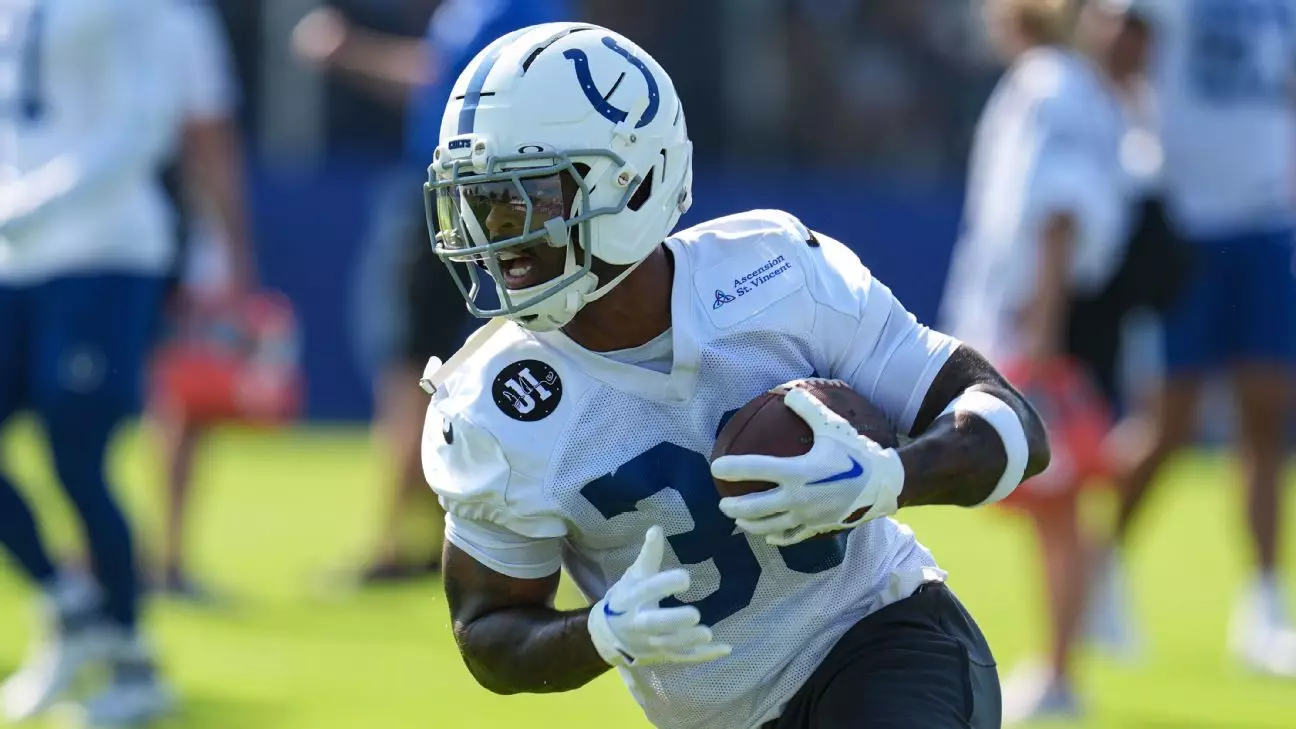Football has long been celebrated as a game of grit, strength, and relentless determination. Coaches often tout the importance of developing a tough, resilient team, sometimes at the expense of safety measures that could prevent devastating injuries. The recent incident involving Salvon Ahmed at Colts training camp starkly underscores this dangerous mentality. While the drive to build a physically formidable team is understandable, the manner in which these aggressive tactics are pursued reveals a troubling disregard for player well-being.
The practice session turned precarious when a so-called “live” tackling drill resulted in a catastrophic injury, highlighting how the glorification of intense physical contact can spiral out of control. In a sport where the risks are inherently high, pushing players to their physical limits without adequate safeguards reveals a fundamental weakness in coaching philosophy. Football should prioritize player health just as much as competitive success, yet many regimes still place performance above safety, risking lives over a temporary tactical edge.
The Problematic Culture of Risk in Training
The decision to allow live tackling during practice, particularly during a period explicitly described as developmental, exposes a disturbing double standard. The NFL, and football at large, often romanticize brutality under the guise of toughness, but incidents like Ahmed’s injury reveal this narrative as dangerously flawed. The banned hip-drop tackle, responsible for numerous lower-body injuries, exemplifies how certain techniques persist because they are perceived as advantageous despite their lethal risks.
The Colts’ coaching staff defended the practice, emphasizing the importance of creating an “edge” and developing a team identity rooted in toughness. However, there is little acknowledgment of the long-term consequences for players’ health. This attitude perpetuates a culture that views injuries as a necessary byproduct of the game rather than preventable tragedies. When teams prioritize winning preseason reps over the safety of their athletes, it reflects a fundamental misalignment of values that should be scrutinized critically.
The Human Cost and Ethical Considerations
Salvon Ahmed’s injury is not just a statistical data point; it’s a human tragedy that exposes the dark side of professional football’s relentless pursuit of dominance. The immediate reaction from teammates and coaches paints a picture of camaraderie and concern, yet the ongoing acceptance of risky practices reveals a broader systemic issue. Player safety is sacrificed on the altar of competition.
The league’s efforts to ban high-risk techniques like hip-drop tackles were steps in the right direction. Their continued usage or the tolerance thereof highlights a reluctance to fully commit to player well-being. The sport’s culture must evolve beyond the glorification of toughness that endangers lives. Athletes deserve more than the false promise of glory—what they need is a commitment to sustainable, safe playing environments.
Moreover, the incident raises vital ethical questions about prioritizing competitive gains over player health. Is it justifiable to include dangerous drills that pose significant injury risks, even during the developmental stages of training? It’s time for the sport’s governing bodies and teams to critically reassess their values. True strength should be measured not in the injuries sustained but in how well the game adapts to prioritize long-term athlete health without compromising competitive spirit.
The Future of Football Training Must Change
Addressing the culture that normalizes dangerous techniques is essential if football intends to preserve its integrity and safeguard its players. The Ahmed incident must serve as a wake-up call—a recognition that fostering a physically aggressive environment can have tragic consequences. Coaches need to strike a delicate balance between developing a tough team and ensuring that safety protocols are prioritized.
Leaders must move away from traditional notions that equate toughness with reckless abandon. Embracing modern safety standards, implementing more controlled drill environments, and finding innovative ways to build resilience without risking lives will be crucial. The future of football depends on shifting the paradigm from one that glorifies injury to one that prizes the on-field safety of those who play the game.
In the end, a game that celebrates human strength must also honor the human being behind it. The sport’s identity should evolve into one that champions resilience without sacrificing safety—transforming the narrative from reckless danger to strategic endurance. Only then can the game truly be considered a testament to sportsmanship, respect, and genuine grit.


Leave a Reply